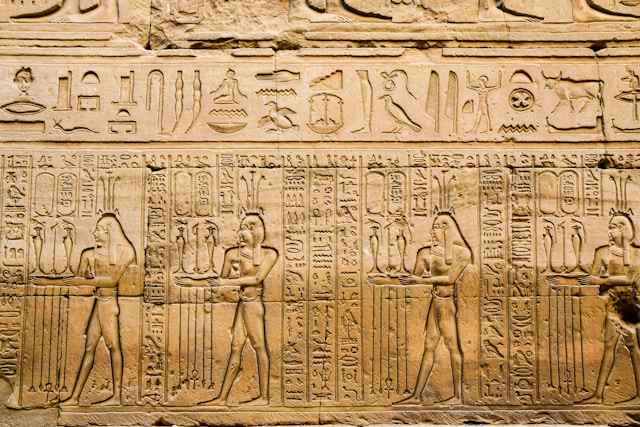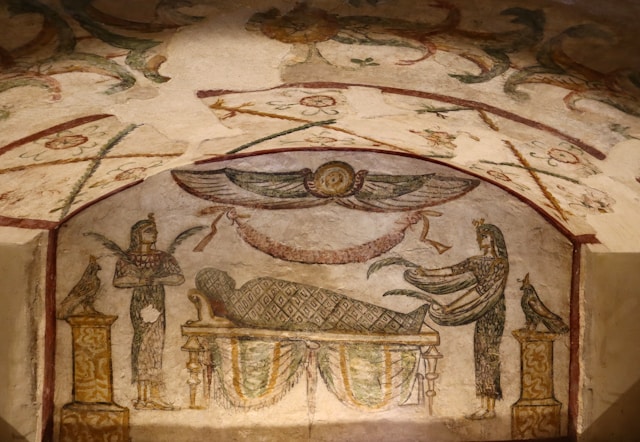Egypt tourist places offer a journey through time. Ancient Egyptian sites like the Pyramids of Giza and the Valley of the Kings reveal the majesty of a civilization that has shaped history. Our trip will encompass iconic Egyptian travel destinations. Here are the top 6 tourist places in Egypt for an unforgettable adventure.
The Great Pyramids of Giza
Visiting the Great Pyramids of Giza is like stepping into a page from history, where the grandeur of ancient Egypt is palpable. The Pyramids, a lasting symbol of Egypt's rich past, are the only surviving structures from the original Seven Wonders of the Ancient World. As you approach, the towering presence of the Pyramids of Khufu, Khafre, and Menkaure is awe-inspiring, with the Great Sphinx standing guard, adding to the complex's mystique.
Valley of the Kings
Crossing the Nile from Luxor, we find ourselves at the Valley of the Kings, an integral part of the Theban Necropolis. This site was a royal burial ground during Egypt's New Kingdom era, primarily spanning the 18th to the 20th dynasties. It's a landscape marked by stark contrasts: the harsh, rocky terrain above ground and the rich, elaborate tombs carved deep into the limestone below.
Temple of Abu Simbel
The Temple of Abu Simbel, a monumental site near the west bank of the Nile in Upper Egypt, is a testament to ancient ingenuity and reverence. This complex features a massive façade with four colossal statues of Ramses II, each standing about 65 feet tall. The statues serve as guardians of the temple and underscore the pharaoh's power and divine status.
The Karnak Temple Complex
Stepping into the Karnak Temple Complex is like walking through a gateway into ancient Egypt's grandeur. As the most significant religious building ever constructed, it's a sprawling site showcasing ancient Egyptian culture's architectural brilliance and spiritual depth. The complex is dedicated to a trio of Theban deities: the great god Amun-Re, his wife Mut, and their son Khonsu.
Islamic Cairo
Stepping into Islamic Cairo is like walking through a living museum, vibrant with the echoes of a past that dates back to its foundation in 969 CE by the Fatimids. This district, originally named al-Qahira, meaning 'the Victorious,' has flourished through various historical epochs, notably during the Ayyubid and Mamluk periods. Today, it hosts an astounding array of historic sites ranging from mosques and shrines to bustling markets and ancient walls and gates.
As we journeyed through Egypt's remarkable landmarks, from the ancient marvels of the Giza Plateau and the Valley of the Kings to the architectural splendors of Abu Simbel and the Karnak Temple Complex and the vibrant history of Islamic Cairo, we've traversed a landscape that is as much about the present as it is a testament to the past. These sites underscore Egypt's significant contribution to civilization and showcase the enduring legacy of its cultures, beliefs, and advancements. Exploring these places offers a lot more than just a brief look into the past; it provides a greater comprehension of human resourcefulness and the eternal search for enlightenment and devotion.
The significance of Egypt's historical and cultural sites extends beyond their monumental beauty and into the heart of what they represent—a continuous thread of human achievement and aspiration. As guardians of this heritage, our collective responsibility is to appreciate, preserve, and share the stories encapsulated within these ancient stones. Whether it's by standing in the shadow of the Great Pyramids, wandering the halls of Karnak, or navigating the bustling streets of Islamic Cairo, one is invited to partake in a legacy that has shaped not only Egyptian identity but has also left an indelible mark on the world's historical and cultural tapestry.

 Egypt
Egypt 


